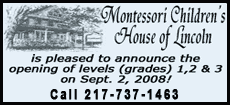|
 Victory Day, marking the defeat of Nazi Germany, is Russia's most important secular holiday, both honoring the enormous sacrifices of World War II, in which nearly 9 million Red Army soldiers are estimated to have died, and asserting the country's military strength. Victory Day, marking the defeat of Nazi Germany, is Russia's most important secular holiday, both honoring the enormous sacrifices of World War II, in which nearly 9 million Red Army soldiers are estimated to have died, and asserting the country's military strength.
Russia has nearly quadrupled its defense spending in recent years, aiming to resuscitate the military forces that deteriorated in the post-Soviet period.
Topol missiles, which have the capacity to carry nuclear warheads, were part of the display of more than 100 tanks, mobile missile units and armored vehicles that was aimed at underlining the military revival. But many of the heavy weapons shown were only slightly modernized versions of equipment developed decades ago.

Although the display was significantly smaller than in Soviet-era parades, the return of the tradition has raised concerns that Russia harbors aggressive ambitions.
But President Dmitry Medvedev, in a speech opening the parade, said "the true purpose of weapons and military equipment is to give reliable defense of the homeland."
Medvedev, who took office Wednesday, stayed away from controversial statements such as predecessor Vladimir Putin's parade speech last year, which implied parallels between the U.S. and the Adolf Hitler's Third Reich.

But he said "we must not allow contempt for the norms of international law."
Russia has consistently criticized both the U.S.-led war in Iraq and wide Western recognition of Kosovo's independence as arrogant violations of international principles.
Putin, who was named Russian prime minister on Thursday, stood just behind Medvedev's shoulder and his face was prominently shown in TV broadcasts as the president spoke
-- underlining the wide belief that Putin will be the power behind the presidency.
[to top of second column] |
 Although Russian officials deny any intentions of returning to Soviet ways, the style and symbolism of Victory Day is heavily redolent of the Communist era.
Posters proclaiming the holiday throughout the city include the hammer-and-sickle insignia, which is also seen on the banners and period uniforms used by some of the regiments, which goose-stepped across the 6-acre (2.5-hectare) square under clear skies.
Defense Minister Anatoly Serdyukov reviewed troops before the parade by standing in the back seat of an open 1980s-era ZIL limousine.
Russian news reports said about 3 million World War II veterans are still alive. Although veterans receive extensive public praise, their pensions are small and many live in poor conditions even as Russia's economy soars.
In a tacit recognition of their straits, Medvedev's first decree after taking office was to order that all World War II veterans receive housing by 2010.
[Associated
Press; By JIM HEINTZ]
Copyright 2008 The Associated
Press. All rights reserved. This material may not be published,
broadcast, rewritten or redistributed.

 |